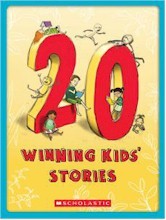Leprechaun ice-cream - Magical Tales by Kiwi Kids is the publication resulting from a competition for aspiring young authors (years 1–8), which was run by New Zealand Post in conjunction with the New Zealand Post Children’s Book Awards 2010.
It includes the work of fifty Kiwi kids from all over the country. An expert judging panel, including well-known New Zealand writer Kate De Goldi, selected the winning works from more than 7000 entries. The challenge for the competition was to “share your writing magic”, giving young writers the opportunity to interpret and explore the theme in their individual ways.Order from Learning Media ph 800 800 565 or local bookshops $

http://www.learningmedia.co.nz/our-work/portfolio/leprechaun-ice-cream
and
20 winning stories written by New Zealand children!
When Scholastic ran a Short Story Competition through its Book Clubs, over 1300 entries were received. With the help of educator Jill Eggleton, children’s author Kyle Mewburn and What Now! TV presenter Charlie Panapa, 20 stories across three age groups were selected as the best in the country. Imaginations are thriving! Read these great stories written by NZ children between the ages of 5 and 13 and see for yourself.
ISBN : 9781869439958 Scholastic New Zealand Limited, September 2010 $20

Kevin has both of these in stock at Take Note Kerikeri phone 09 407 9721, or try your local bookseller...

Kevin has both of these in stock at Take Note Kerikeri phone 09 407 9721, or try your local bookseller...


